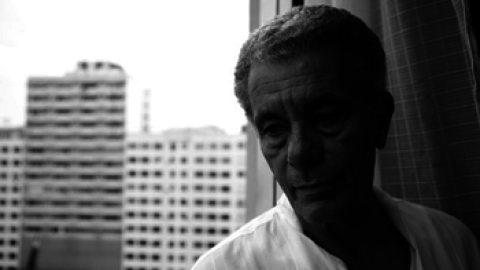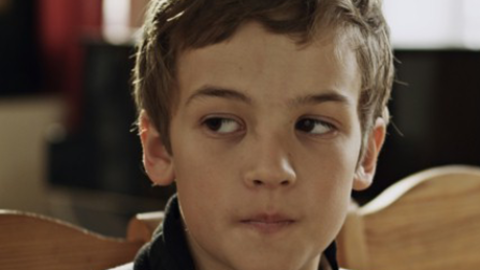Festivals: Robert Koehler on Riviera Maya

The Last Christeros
As a rule, festivals and beaches usually don’t go together. (Cannes, that great outlier, doesn’t count; besides, the beaches there are lousy.) Nothing against beaches: if the water’s good, and the sand wide and soft and clean enough, they’re great for a nice, long run. But there’s a reason why top-notch festivals tend not to be nestled near seaside resorts. Vacationing and festivalgoing are nearly impossible to mix. There’s been a minor sub-business in the “resort festival,” but few pay notice to them, since they tend more to be elaborate excuses for a weeklong getaway than genuine cinema meeting places. A few, like the Bermuda International Film Festival, have a fairly respectable history, and the annual event at one of India’s top resorts, in Goa, is a well-regarded destination point for more than soaking some rays. (A choice vacation excuse, which I once had to pass on, was an invitation to the short-lived Turks & Caicos International Film Festival. No kidding.)So, on paper, it would have been easy to dismiss an invite to the first edition of the Riviera Maya Film Festival. Given that the festival literally covers the Riviera Maya—which spans the Caribbean coastline of Quintana Roo, one of Mexico’s youngest states on the Yucatán Peninsula, from Cancún in the north and south to Tulum, known for its spectacular beachside Mayan ruin promontory—the first impression is of a pure tourist-board event designed to promote “culture” in Mexico’s top resort destination. Memories of my sole visit to Cancún include an encounter with a nightmarish array of mega-hotels covering an artificially built leg of sand. Count me out.

Malaventura
The festival’s further dimensions weren’t immediately apparent until arrival and a perusal of the elegantly designed catalogue, festooned (like its official t-shirt and the walls of the main venue in the semi-sleepy beach town of Playa del Carmen) with its dominant branding color: a phosphorescent lime-green meant to echo the event’s running ecological theme—environmental protection being both a crucial issue along the continually endangered coastline (ironically, by touristic developments and massive resorts) and a draw for “eco-tourism.” Beyond a smartly curated selection of new, independent Mexican films—superior in every way to Guadalajara’s own national competition—and broader sections titled “Planetarium,” ”Great Audience,” and the auteur-slanted “Panorama,” the Riviera Lab features a roster of Latin American works in progress as well as a co-production forum of films in development.
Together, the contours of Riviera Maya combine many of the aspects of the old FICCO, with its ambitious survey of contemporary cinema, and BAFICI, particularly its Buenos Aires Lab, which has proven to be a hugely effective works-in-progress site and source of co-production activity for emerging Latin American filmmakers. The result of all of this activity, between finished, nearly finished, and proposed movies, was a kind of conference of the (cinematic) birds, with nearly every important young Mexican filmmaker in attendance, along with such key figures as Raya Martin, whose latest project, New Spain, won a co-production award. In fact, it became a game to determine who among Young Mexican Cinema’s top filmmakers wasn’t there, and only three came to mind: Carlos Reygadas, Nicolas Pereda, and Matias Meyer, who nevertheless was there in spirit through The Last Christeros, a winner in the national competition. That all this is a major achievement for a festival in its first year is an understatement.

The Man Who Lived in a Shoe
Typical of FICCO days, the competition happily did away with musty categories of fiction and nonfiction, so that a visitor looking to catch what’s fresh and new in Mexico, regardless of category, would get it here in a single stop. These highlights included Jose Álvarez’ Canícula; Everardo González’ Drought (also a prize winner); Gabriella Gómez-Mont’s perverse study of a half-crazed genius, The Man Who Lived in a Shoe; Juan Manuel Sepúlveda’s majestic observational documentary on Mayan survivors of Guatemala’s brutal, decades-long civil war, Lessons for a War; Roberto Olivares’ far more modest miniature portrait of an aging ropemaker, Silvestre Pantaleón; Hari Sama’s uneven tale of a classical guitarist’s emotional recovery after tragedy, The Dream of Lu; Meyer’s The Last Christeros; and Gabriel Marino’s sensitively rendered drama of a sexually precocious teen girl’s road trips [right?], A Secret World. A few new films slipped in, such as Ivan Lowenberg’s Castration, an ultimately pointless account of a young woman beset with several annoying habits (like smelling her fingers after masturbating) and already stuck in a rut at a cut-rate Mexico City casting agency. And Anton Terni’s meandering Anima proved to be a shapeless exercise in hipster, post-Freudian noodlings in the desert, with Meyer’s first film, Wadley, its overweening influence.But the program’s core was as solid a curated survey of a national cinema as I’ve seen at any recent festival; in effect, Lipkes and his team cherry-picked the best work out of Mexico’s two biggest festivals, Morelia and Guadalajara, and gave them an intelligent showcase. In a sense, it’s a program that functions much like a piece of film criticism, laying out an argument for the best of Mexican cinema’s current maturity and range. Sepúlveda’s grand sense of melancholy mixed with dignity in Lessons for a War—in which the Mayan people are accorded a sense of everyday humanity that traditional media reports on Guatemala rarely provide—came alongside the absurdism of Gomez-Mont’s incredible subject, worthy of Buñuel. Then jump to Meyer’s band of Christeros, whose 1926 rebellion as orthodox Christians against the left-wing, anticlerical government of Plutarco Elías Calles is treated with utmost rigor and austerity, like a holy march toward certain death, without a God in sight.

Life Without Principle
Riviera Maya’s impressive concentration of such established and rising Asian auteurs as Takashi Miike (13 Assassins and Ninja Kids!!), Goro Miyazaki (From Up on Poppy Hill), Su Chao-pin (Reign of Assassins), Hirokazu Kore-eda (I Wish), Mohammad Rasoulof (Goodbye), and Cai Shangjun (People Mountain People Sea) included two masterpieces by Hong Sang-soo (Oki’s Movie) and Jafar Panahi (This Is Not a Film). It’s a selection that underlines the festival’s prevailing sense of serious curation. Getting a tan on top of it all began to seem like an afterthought.







